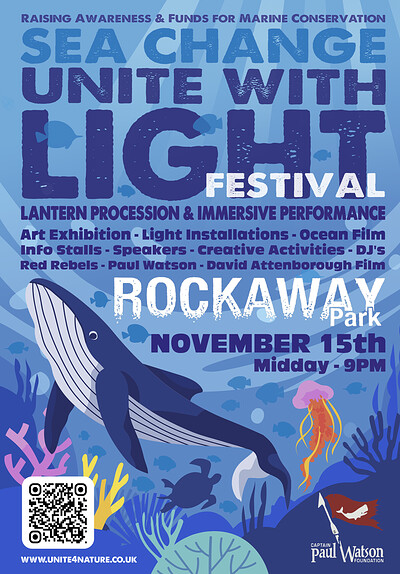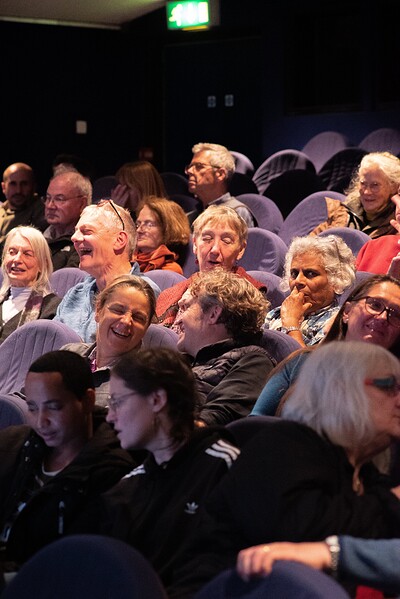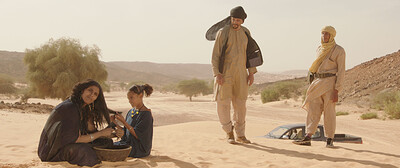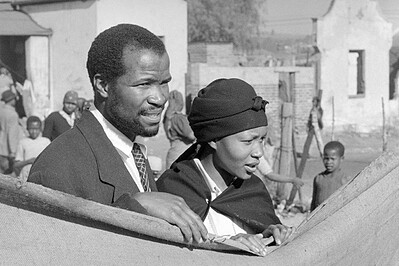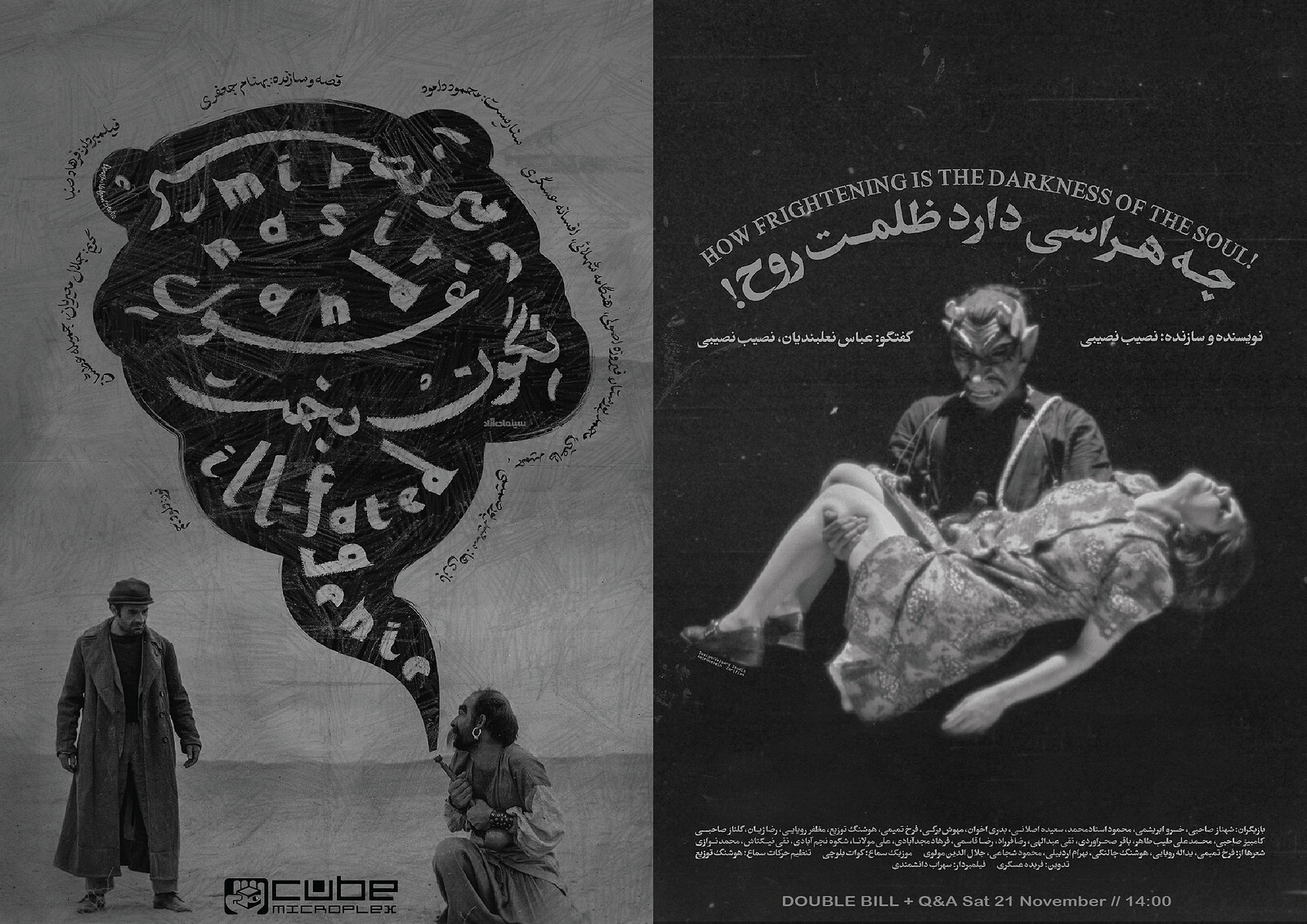
Headfirst Editor's Pick
"Before the Iranian Revolution, borrowed cameras birthed Cinema-ye Azad (Free Cinema), a movement that grew from 8mm experiments into a nationwide network of censorship-defying underground festivals. The Cube honours its legacy with theatrical afterlife vision How Frightening is the Darkness of the Soul, screened back-to-back with dark rural fable Mir Nasir and the Ill-Fated Genie."
Join the Headfirst mailing list for our unbiased recommendations.
A event held at The Cube on Saturday 22nd November. The event starts at 14:00.
Cinema-ye Azad, or Free Cinema, was an underground movement of filmmakers in Iran that began in 1969, with the explicit aim of creating a fully independent cinema opposed to the mainstream ‘Filmfarsi’ in both form and content, methods and ideals. Founded in Tehran by Basir Nasibi, the movement’s range of approaches and influences grew in proportion to its geographical and numerical expansion across the country. Beginning with modest university screenings in the capital, Cinema-ye Azad would go on to found 20 provincial offices throughout the country, publish a magazine, organise several festivals and produce five feature and 1000 short films by 300 filmmakers during its decade of activity.
If the better-known, contemporaneous Iranian New Wave movement predominantly consisted of foreign-educated, Tehran-based middle-class filmmakers, Cinema-ye Azad brought the possibility of engaging with culture to disadvantaged provinces by providing access to rudimentary equipment and resources. The movement’s base consisted of self-taught filmmakers who shared knowledge and resources alike. However, the dream of a free cinema was short-lived as the movement ceased activities after the new revolutionary government’s attempts at curtailing its independence in 1979. Without systematic archives, most of the films and documents of this unique movement have been lost to history in the decades since its dissolution.
Cinema-ye Azad was the result of a multiplicity of influences, material conditions, personal visions, cultural aims, art forms, political currents, and social formations. Its unmatched vibrancy was the reflection of a period of exceptional cultural and political dynamism, a pre-revolutionary period fueled by three contradictory poles: a government bent on rapid modernisation of a predominantly agrarian society, and eager to project this development to the rest of the world through artistic productions; a population steeped in traditional and religious beliefs; and a tiny but highly educated urban intelligentsia constantly frustrated by the lack of public engagement with its highbrow cultural output on the one hand, and the suffocating political pressures of the same state funding its artists creations on the other.
The results of these material and intellectual tensions found their way into the thematic concerns of the movement. Although informed by national myths, indigenous locales, and regional tastes, Cinema-ye Azad often undermined traditional narratives that no longer possessed a material basis while persisting in popular consciousness. As Western filmmakers like Pier Paolo Pasolini and Agnes Varda filmed projects that perpetuated familiar Oriental tropes in Iran in 1974 and 1976, respectively, the young filmmakers of Cinema-ye Azad protested the hollowness of such fictions, for they no longer corresponded to the reality they experienced.
As an introduction to this neglected movement, we present a double-feature screening of How Frightful Is the Darkness of the Soul! (Nasib Nasibi, 1971) and Mir Nasir and the Ill-fated Genie (Behnam Jafari, 1975). The former, while not officially considered part of Cinema-ye Azad by its creator, Nasib Nasibi (the brother of Basir, the movement’s founder), stands in close proximity to Cinema-ye Azad and provides essential artistic and social context for understanding it. How Frightful is an avant-garde film poem about life after death, highlighting the close connections between the literary and theatrical circles with Cinema-ye Azad, especially those of artistic formations such as the Theatre Workshop (Kargah-e Namayesh) and the Poetry of Volume. Mir Nasir, about a genie freed from a bottle, represents the narrative side of Cinema-ye Azad while showcasing the movement’s taste for anthropological observation and mythical deconstruction.
The two films represent the range of sensibilities and approaches encompassed within Cinema-ye Azad while emphasising some of its recurring themes.
This screening will be followed by an online Q&A with researcher and film archivist Hadi Alipanah
Programme
How Frightening Is The darkness Of the Soul! (Che Harasi Darad Zolmat E Rooh),
dir. Nasib Nasibi, Iran 1971, English Subtitle, 60 min, Cert: 18
Mir Nasir and the Ill-fated Genie (MirNasir va ghoul E Negoonbakht),
dir. Behnam Jafari, Iran 1975, English subtitles, 67 min, Cert: 18
Presented in partnership with Shaghayegh Raoufi and Arta Barzanji
Special thanks to Hadi Alipanah for his contributions in reviving the legacy of Cinema-ye Azad.
This screening is dedicated to the memory of Abbas Nalbandian and Nasib Nasibi.
Entry requirements: 18+
If the better-known, contemporaneous Iranian New Wave movement predominantly consisted of foreign-educated, Tehran-based middle-class filmmakers, Cinema-ye Azad brought the possibility of engaging with culture to disadvantaged provinces by providing access to rudimentary equipment and resources. The movement’s base consisted of self-taught filmmakers who shared knowledge and resources alike. However, the dream of a free cinema was short-lived as the movement ceased activities after the new revolutionary government’s attempts at curtailing its independence in 1979. Without systematic archives, most of the films and documents of this unique movement have been lost to history in the decades since its dissolution.
Cinema-ye Azad was the result of a multiplicity of influences, material conditions, personal visions, cultural aims, art forms, political currents, and social formations. Its unmatched vibrancy was the reflection of a period of exceptional cultural and political dynamism, a pre-revolutionary period fueled by three contradictory poles: a government bent on rapid modernisation of a predominantly agrarian society, and eager to project this development to the rest of the world through artistic productions; a population steeped in traditional and religious beliefs; and a tiny but highly educated urban intelligentsia constantly frustrated by the lack of public engagement with its highbrow cultural output on the one hand, and the suffocating political pressures of the same state funding its artists creations on the other.
The results of these material and intellectual tensions found their way into the thematic concerns of the movement. Although informed by national myths, indigenous locales, and regional tastes, Cinema-ye Azad often undermined traditional narratives that no longer possessed a material basis while persisting in popular consciousness. As Western filmmakers like Pier Paolo Pasolini and Agnes Varda filmed projects that perpetuated familiar Oriental tropes in Iran in 1974 and 1976, respectively, the young filmmakers of Cinema-ye Azad protested the hollowness of such fictions, for they no longer corresponded to the reality they experienced.
As an introduction to this neglected movement, we present a double-feature screening of How Frightful Is the Darkness of the Soul! (Nasib Nasibi, 1971) and Mir Nasir and the Ill-fated Genie (Behnam Jafari, 1975). The former, while not officially considered part of Cinema-ye Azad by its creator, Nasib Nasibi (the brother of Basir, the movement’s founder), stands in close proximity to Cinema-ye Azad and provides essential artistic and social context for understanding it. How Frightful is an avant-garde film poem about life after death, highlighting the close connections between the literary and theatrical circles with Cinema-ye Azad, especially those of artistic formations such as the Theatre Workshop (Kargah-e Namayesh) and the Poetry of Volume. Mir Nasir, about a genie freed from a bottle, represents the narrative side of Cinema-ye Azad while showcasing the movement’s taste for anthropological observation and mythical deconstruction.
The two films represent the range of sensibilities and approaches encompassed within Cinema-ye Azad while emphasising some of its recurring themes.
This screening will be followed by an online Q&A with researcher and film archivist Hadi Alipanah
Programme
How Frightening Is The darkness Of the Soul! (Che Harasi Darad Zolmat E Rooh),
dir. Nasib Nasibi, Iran 1971, English Subtitle, 60 min, Cert: 18
Mir Nasir and the Ill-fated Genie (MirNasir va ghoul E Negoonbakht),
dir. Behnam Jafari, Iran 1975, English subtitles, 67 min, Cert: 18
Presented in partnership with Shaghayegh Raoufi and Arta Barzanji
Special thanks to Hadi Alipanah for his contributions in reviving the legacy of Cinema-ye Azad.
This screening is dedicated to the memory of Abbas Nalbandian and Nasib Nasibi.
Entry requirements: 18+
Tickets for similar Bristol events.

